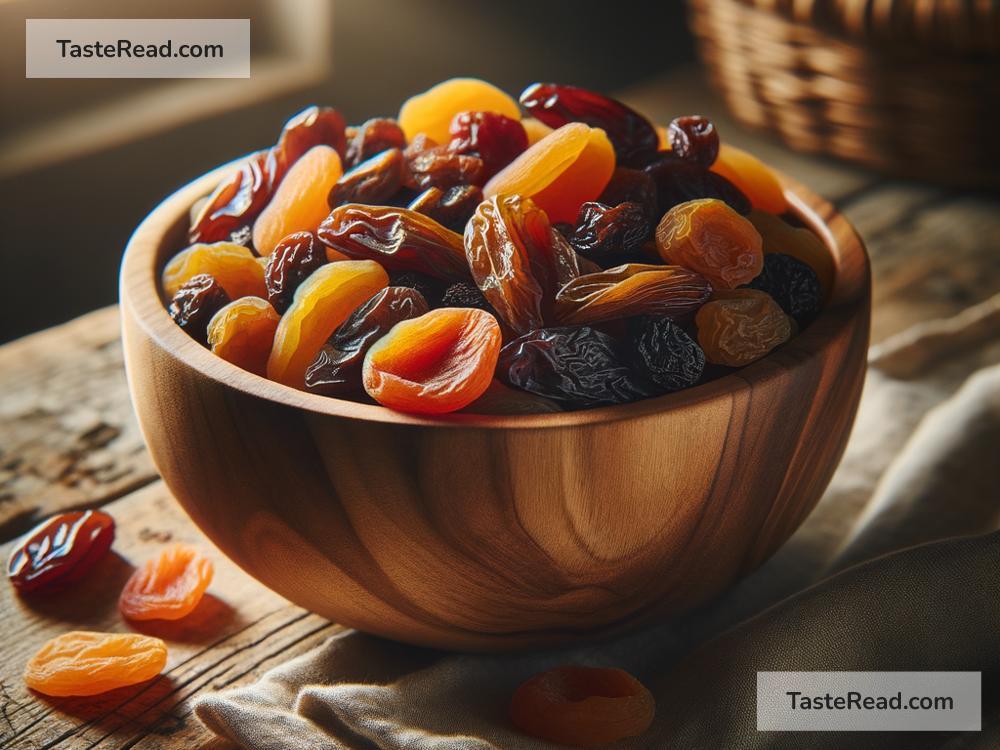Why Dried Fruits Have Concentrated Sweetness
Have you ever noticed how dried fruits, whether it’s raisins, dates, dried apricots, or dried mangos, taste much sweeter than their fresh counterparts? While gobbling up these sweet, chewy snacks might make you wonder if sugar has been added, the reason behind their concentrated sweetness lies in a simple scientific process. In this blog, we’ll explore why dried fruits taste so sweet and how their natural flavors become intensified.
What Are Dried Fruits?
First things first, dried fruits are simply fruits that have had most of their water removed through a drying process. This dehydration can happen naturally by drying fruits in the sun or through controlled methods like air drying or freeze-drying. Fruits such as grapes, plums, and apples are commonly dried and enjoyed as snacks or used in recipes.
The dehydration process not only shrinks fruits to smaller sizes but also transforms their taste, texture, and appearance. If you compare a dried apricot to a fresh one, you’ll notice that the dried version is darker, chewier, and significantly sweeter.
The Science Behind the Sweetness
The key to understanding the concentrated sweetness of dried fruits lies in one simple fact: water makes up a big part of fresh fruit. In fact, fresh fruits are typically 70–90% water. When fruits are dried, this water content is drastically reduced, leaving behind only the solid components like sugars, fibers, vitamins, and minerals.
Here’s the interesting part: when you remove water from the fruit, you don’t remove the sugar—it remains intact. Fresh fruits contain sugar naturally in the form of fructose (a natural fruit sugar), glucose, and sucrose. But since the water is gone after drying, the sugar becomes much more concentrated. Let’s think of an example:
- Fresh grapes are around 80% water. When they’re dried to become raisins, only about 15–20% water remains.
- This means all the sugars that were once spread out in the watery grape are now packed into a much smaller raisin. A raisin is essentially a mini grape with the same amount of sweetness but less water diluting the flavors.
An Analogy: Concentrating Flavor
Think of making homemade fruit juice. If you extract juice from oranges and decide to boil it to make a sauce, you’ll notice that the liquid becomes thicker and sweeter as the water evaporates. The same concept applies to dried fruits—less water equals more concentrated flavor and sweetness. So, no extra sugar is needed to make dried fruits taste sweeter; it’s all natural!
Why Do We Dry Fruits in the First Place?
Dried fruits aren’t just popular because they taste sweet; they’re also very practical. Here’s why people love them:
-
Preservation: Fresh fruits spoil quickly because of their moisture. Drying fruits helps preserve them for longer periods because bacteria and mold need water to grow. Dried fruits can last for months, making them ideal for storing and transporting.
-
Portability: Dried fruits are lightweight and compact. A handful of dried apricots or raisins is easier to carry around than bulky fresh alternatives. This makes them the perfect snack for hikes, road trips, or even school lunches.
-
Nutritional Benefits: Dried fruits retain most of the nutrients, including fiber, vitamins, and minerals, found in fresh fruits. For instance, dried apricots are packed with vitamin A and iron, while raisins are rich in potassium and antioxidants. Just be mindful that the lack of water means dried fruits are also calorie-dense compared to fresh fruits.
Are Dried Fruits Healthier?
While dried fruits have many benefits, their concentrated sweetness also means they’re richer in calories and sugar. A serving of fresh grapes weighs more and fills you up faster than a serving of raisins because fresh fruits have more water and fewer calories. For example:
- A cup of fresh grapes has about 62 calories, while a cup of raisins has over 400 calories!
- So, if you’re keeping an eye on sugar and calorie intake, it’s a good idea to eat dried fruits in moderation.
On top of this, some dried fruits sold in stores are coated with added sugar or syrups to boost flavor, and this raises their sugar content even further. Always check the packaging and look for dried fruits labeled “unsweetened” or “no added sugar.”
Tips for Enjoying Dried Fruits
If you love the natural sweetness of dried fruits, here are some ways to incorporate them into your meals:
- Mix dried fruits into oatmeal, yogurt, or cereal for a touch of sweetness.
- Add them to trail mixes, along with nuts and seeds, for a balanced snack.
- Use them as a natural sweetener in baking recipes like muffins, bread, or granola bars.
- Pair dried fruits with savory dishes like salads or roasted vegetables for interesting flavor combinations.
Conclusion
The concentrated sweetness of dried fruits is a result of a simple dehydration process that removes water while preserving the natural sugars, flavors, and nutrients found in fresh fruits. They’re an excellent snack option for people who enjoy sweet, chewy foods that are easy to carry and store. However, remember that dried fruits are more calorie-dense than fresh fruits, so exercise moderation to avoid overconsuming these sugar-packed treats.
Next time you munch on dried mango or bite into a raisin, appreciate the natural sweetness that comes from this fascinating transformation—and enjoy every bite!


